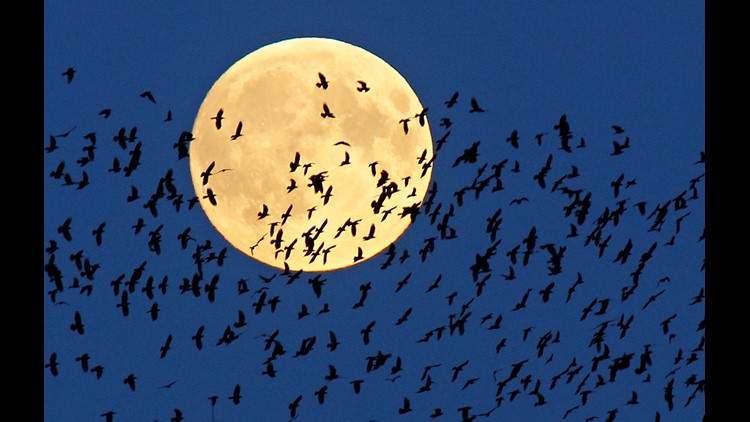Eagle-eyed skywatchers get those heads up early Wednesday: A "penumbral" lunar eclipse will slip across the skies.
![AP BELARUS SUPERMOON LUNAR ECLIPSE I BLR [image : 82082082]](http://www.gannett-cdn.com/media/2016/03/21/USATODAY/USATODAY/635941660793451873-AP-Belarus-Supermoon-Lunar-Eclipse.jpg)
Not as spectacular – or noticeable – as a total lunar eclipse, this rather subtle phenomenon occurs when the moon moves through the outer part of Earth’s shadow (known as the penumbra), according to EarthSky.org.
![Gannett-cdn [oembed : 82081036] [oembed : 82081036] [oembed : 82081036] [oembed : 82081036] [oembed : 82081036] [oembed : 82081036] [oembed : 82081036] [oembed : 82081036] [oembed : 82081036] [oembed : 82081036] [oembed : 82081036] [oembed : 82081036] [oembed : 82081036] [oembed : 82081036] [oembed : 82081036] [oembed : 82081036]](/Portals/_default/Skins/PrestoLegacy/CommonCss/images/smartembed.png)
Look at the full moon in the Western sky shortly before dawn breaks, and if skies are clear you may notice that it's slightly darker than usual.
Observant people will recognize the shadow, while others won't spot anything at all, EarthSky's Bruce McClure notes.
About 35% of all eclipses are of the penumbral type, which can be difficult to detect even with a telescope, according to eclipse expert Fred Espenak.
Another 30% are partial eclipses, which are easy to see with the unaided eye. The final 35% or so are total eclipses, and these are quite extraordinary events to behold, Espenak said.
Both partial and total lunar eclipses occur when the moon passes through part or all of the umbra, the main part of our planet's shadow.
The height of Wednesday's penumbral eclipse will be 7:48 a.m. ET (6:48 a.m. CT, 5:48 a.m. MT and 4:48 a.m. PT), NASA said.
And get ready for another astronomical treat this week: A very bright view of the planet Jupiter will shine in the evening sky near the almost full moon on Tuesday.
![Gannett-cdn [oembed : 82080736] [oembed : 82080736] [oembed : 82080736] [oembed : 82080736] [oembed : 82080736] [oembed : 82080736] [oembed : 82080736] [oembed : 82080736] [oembed : 82080736] [oembed : 82080736] [oembed : 82080736] [oembed : 82080736] [oembed : 82080736] [oembed : 82080736] [oembed : 82080736] [oembed : 82080736]](/Portals/_default/Skins/PrestoLegacy/CommonCss/images/smartembed.png)



